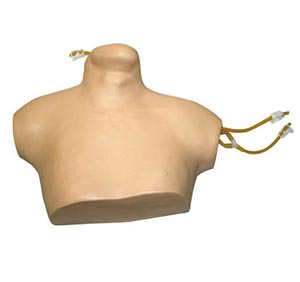20-09-2024
ADA MED SUPPLY LIMITED
Central venous puncture intubation model, as an important tool of modern medical education, undoubtedly creates a practice field close to actual combat for medical personnel. In this simulated environment, medical staff can practice repeatedly without fear of risks until they have mastered various skills of central venous puncture intubation, laying a solid foundation for real clinical operations.
First of all, the central venous puncture intubation model from the skin, subcutaneous tissue to blood vessels, heart and other key parts, the model is finely simulated to ensure that the medical staff can feel the touch and resistance similar to the real situation during the operation. This highly simulated design enables medical staff to get close to the actual combat experience in the simulated environment, so as to better adapt to the complex situation in the actual work.

Secondly, the model provides a wealth of training scenarios and situational simulations. By adjusting the state of the model, such as setting different blood vessel conditions and simulating the patient's breathing and heartbeat, medical staff can perform exercises in different situations. This diversified training method not only helps medical staff master the operation skills in various situations, but also improves their resilience and decision-making ability.
Finally, it has the characteristics of reusable. Medical staff can practice repeatedly at different times and in different scenarios, and deepen their understanding and mastery of central venous puncture intubation technology through continuous practice and exploration. This kind of repeatable training method not only improves the efficiency and effect of training, but also reduces the training cost and time cost.
To sum up, the central venous puncture intubation model has created a practice field close to actual combat for medical personnel through highly simulated design, rich training scenarios and reusable characteristics. In this simulated environment, medical staff can practice repeatedly without fear of risk until they have mastered the skills of central venous catheterization. This not only helps to improve the professional skill level of medical staff, but also provides a more powerful guarantee for the life safety of patients.